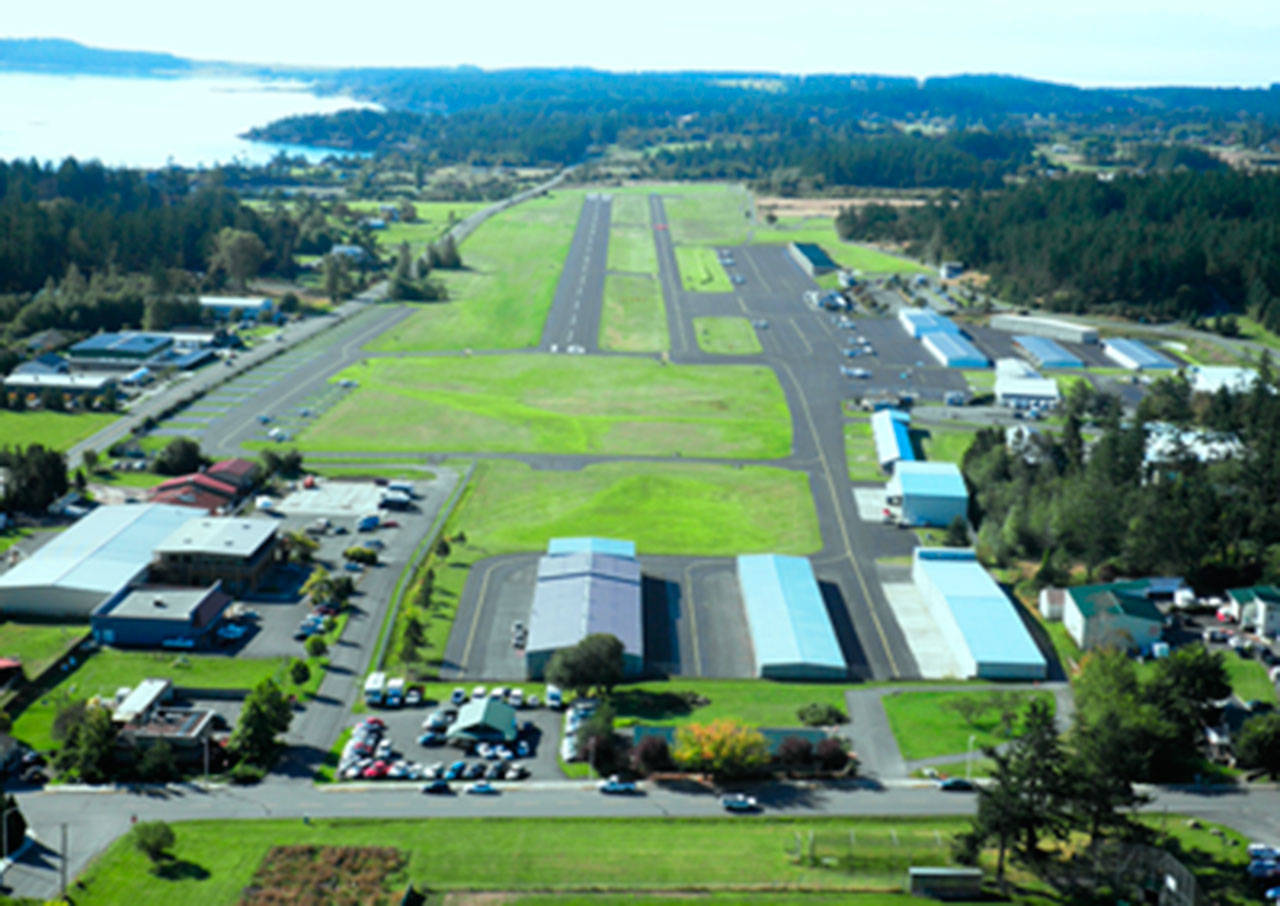After spending $1 million rebuilding the airstrip, the Friday Harbor Airport is required to create a new master plan, due to stricter enforcement of Federal Aviation Administration guidelines regarding buffers between taxiways and runways.
“We are not the only airport caught up in this, many small airports are in the same situation,” said Todd Nichols, Port of Friday Harbor’s executive director. Nichols said the airstrip would normally have at least another 15 years of good use, but if the FAA enforces the buffer requirement, the nearly brand-new taxiway could have to be torn up and shifted 104 feet away from the current airstrip.
The port retained a national aviation consulting firm called Coffman Associates to draft the plan. On Dec. 6, from 4:30 to 6 p.m. at the Friday Harbor Roy Franklin Terminal, the public viewed preliminary master plan documents, including an inventory and requirements of the facility, a demand forecast and a map of environmentally sensitive areas. Two Coffman Associates planners, Steve Wanger and Patrick Taylor were available for questions.
Nichols explained that when the taxi and runway were designed, the FAA knew that larger 9c caravan planes — passenger planes primarily used by Kenmore air — landed at the terminal. FAA guidelines state a minimum of 260 feet is needed for that size of planes, however, a 156-foot buffer was deemed sufficient to accommodate them. Recent interpretation of the guidelines has led to stricter enforcement. The FAA is now requiring the airport to produce a 20-year master plan earlier than expected and is holding back federal dollars for maintaining the terminal until the plan is complete.
Coffman Associates used population and socio-economic statistics and flight trends to assess future needs. Total passenger enplanements — or passenger boardings — will increase from approximately 14,000 currently, to 19,400 in 2037. Enplanements are key, Coffman Associates staff state in their forecast report. Airports recording over 10,000 enplanements a year receive $1,000,000 from the federal government toward maintaining terminals. These are the federal dollars currently being held from the Friday Harbor Airport.
The master plan also includes a map of environmentally sensitive areas, such as wetlands located near the airport, as well as a stream that flows through the property into Griffin Bay, east of the airport. Taylor noted that should the wetland areas on the property be developed, that could be mitigated.
“What happens in that situation is the port would contribute to a wetland bank by agreeing to protect a larger wetland,” Taylor said.
Walking trails currently looping through the property, are anticipated to remain. Wagner did clarify that the port owns the property. These are not public trails, he said, they are paths the port has given people access to. If the airport needs to develop the land, they will be altered or closed.
In late April, another public open house will be held. At this meeting, Nichols said, the master plan will identify the airport’s priorities, along with alternatives to those projects. Options to accommodate taxiway regulations, for example, will be available. After public input, the plan will be submitted to the FAA for approval. In late summer the public can review the final draft.
While the plan appears to show massive changes, the airport is not forecasting major development anytime soon, said Port Commissioner Barbara Marrett, cautioning that it depends on the FAA.
“We are really hoping the FAA doesn’t do something extreme like make us tear up the taxiway and move it,” Nichols said.
To view the Friday Harbor airport master plan working documents, visit fridayharbor.airportstudy.com.



